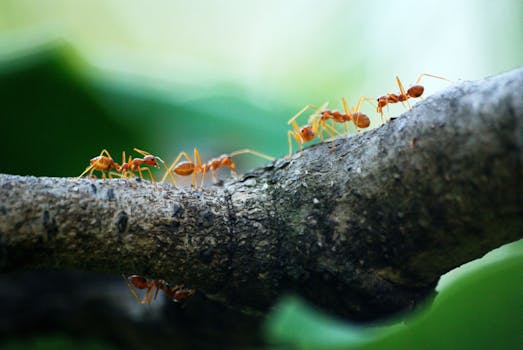Mythological Creatures and Their Animal World Inspiration
Throughout history, mythological creatures have captivated the human imagination, serving as symbols of power, mystery, and the unknown. These fantastical beings often draw inspiration from the animal world, blending characteristics of various species to create unique entities that embody the traits of their real-life counterparts. This article explores some of the most iconic mythological creatures, such as griffins and centaurs, and examines the animal inspirations behind them.
The Griffin: A Majestic Hybrid
The griffin is one of the most well-known mythological creatures, often depicted as a majestic being with the body of a lion and the head and wings of an eagle. This powerful combination symbolizes strength, courage, and wisdom, making the griffin a popular figure in various cultures.
Animal Inspirations
The griffin’s design is a fascinating amalgamation of two of the animal kingdom’s most revered creatures:
- Lion: Known as the king of the jungle, the lion represents strength, bravery, and nobility. Its powerful physique and regal demeanor contribute to the griffin’s image as a guardian and protector.
- Eagle: As a symbol of freedom and vision, the eagle adds an element of majesty and sharpness to the griffin. Its ability to soar high in the sky complements the lion’s grounded strength, creating a balanced creature that embodies both terrestrial and celestial qualities.
Historically, griffins have been associated with various cultures, including ancient Egypt, where they were believed to protect the pharaohs’ tombs, and in Greek mythology, where they guarded treasures and sacred sites.
The Centaur: A Symbol of Duality
Centaurs are another fascinating example of mythological creatures that blend human and animal traits. Typically depicted as beings with the upper body of a human and the lower body of a horse, centaurs represent the duality of human nature—combining intellect and instinct.
Animal Inspirations
The centaur’s design draws primarily from:
- Horse: The horse symbolizes freedom, power, and grace. Its strong legs and speed contribute to the centaur’s physical prowess, while its domestication reflects the relationship between humans and nature.
- Humanity: The human aspect of the centaur introduces complexity, representing the struggle between civilization and primal instincts. This duality is often explored in literature and art, showcasing the tension between reason and emotion.
Centaurs have appeared in various mythologies, most notably in Greek mythology, where they are often portrayed as wild and unruly beings, yet some, like Chiron, are depicted as wise and noble teachers.
Other Notable Mythological Creatures
Beyond griffins and centaurs, numerous other mythological creatures draw inspiration from the animal kingdom. Here are a few notable examples:
- Mermaids: Combining the upper body of a human with the tail of a fish, mermaids symbolize the allure and danger of the sea, reflecting humanity’s fascination with aquatic life.
- Chimeras: Often depicted as a blend of a lion, goat, and serpent, chimeras represent chaos and unpredictability, drawing on the characteristics of multiple animals to create a fearsome creature.
- Dragons: With roots in various cultures, dragons often combine features of reptiles and birds, symbolizing power, wisdom, and sometimes destruction.
The Cultural Significance of Mythological Creatures
Mythological creatures serve not only as fascinating subjects of folklore but also as reflections of cultural values and beliefs. They often embody the fears, aspirations, and moral lessons of the societies that created them. For instance:
- Griffins are often seen as protectors, symbolizing the importance of guardianship in ancient cultures.
- Centaurs illustrate the struggle between civilization and nature, highlighting the complexities of human existence.
- Mermaids often represent the duality of beauty and danger, reflecting societal views on femininity and sexuality.
Conclusion
Mythological creatures like griffins and centaurs are more than just fantastical beings; they are rich symbols that draw from the animal world to convey deeper meanings about human nature and society. By blending characteristics of various animals, these creatures encapsulate the complexities of existence, embodying both strength and vulnerability. As we continue to explore these mythological beings, we gain insights into the cultures that created them and the timeless themes they represent. The allure of these creatures endures, reminding us of the power of imagination and the intricate connections between humanity and the natural world.
